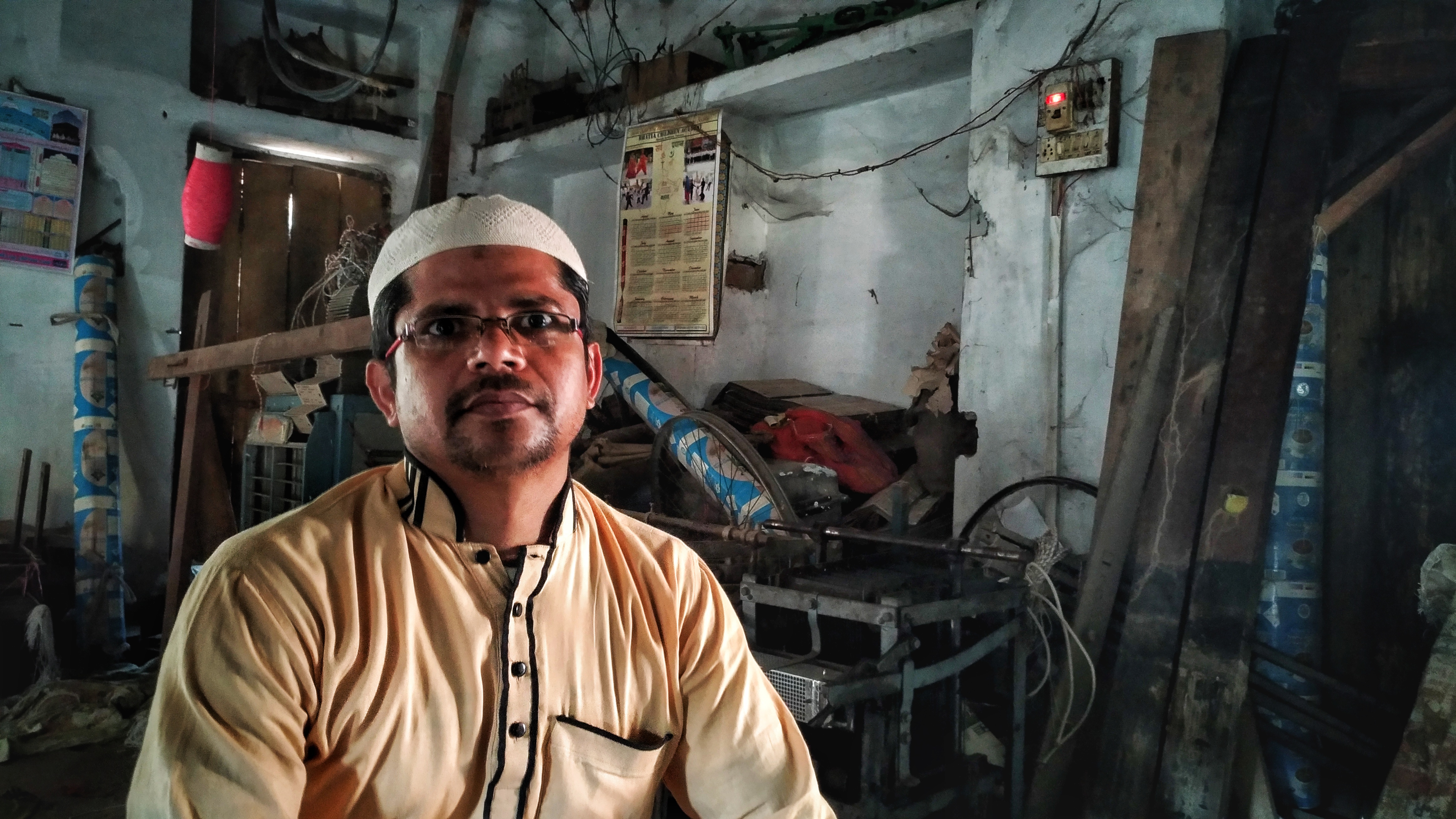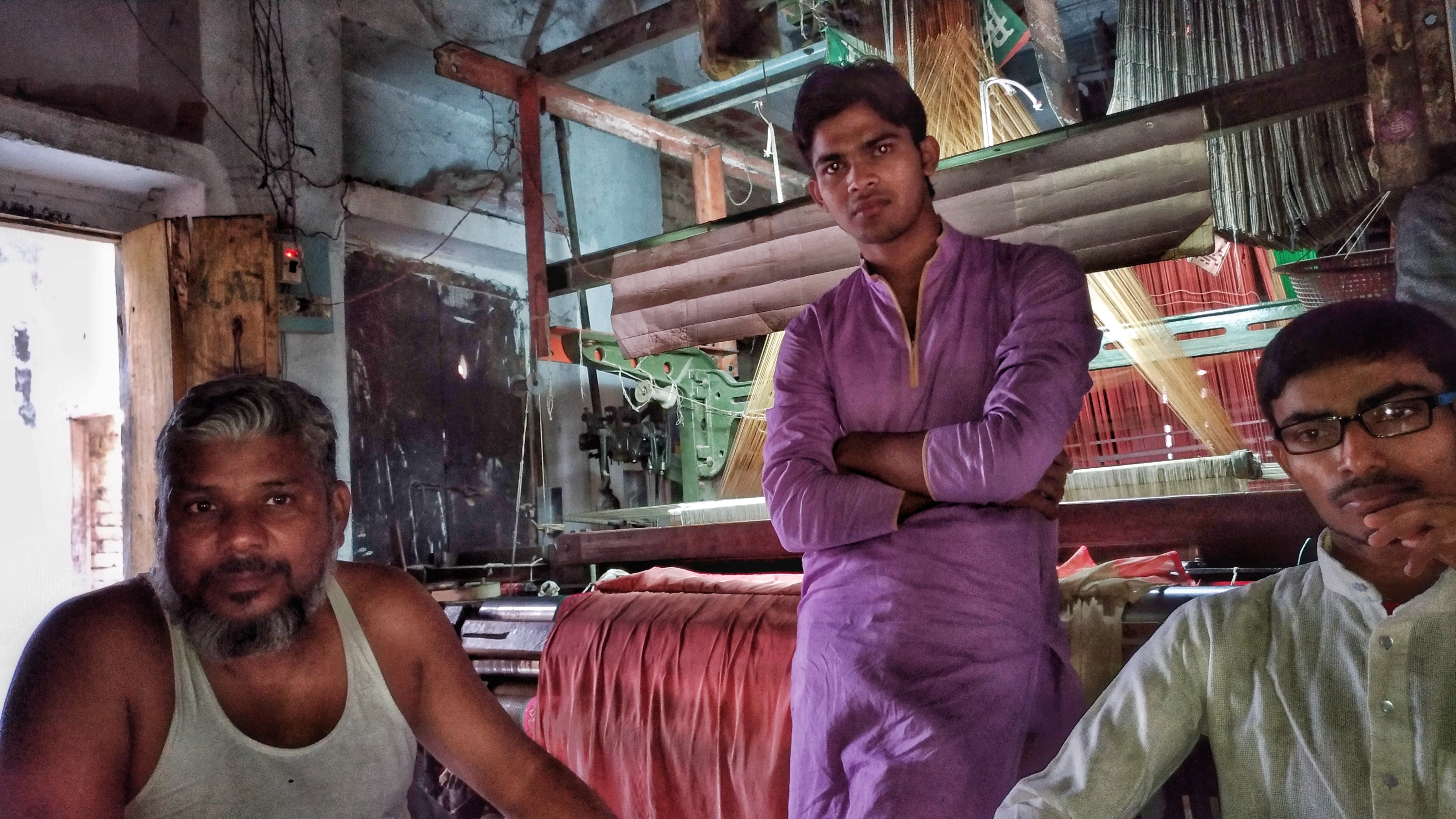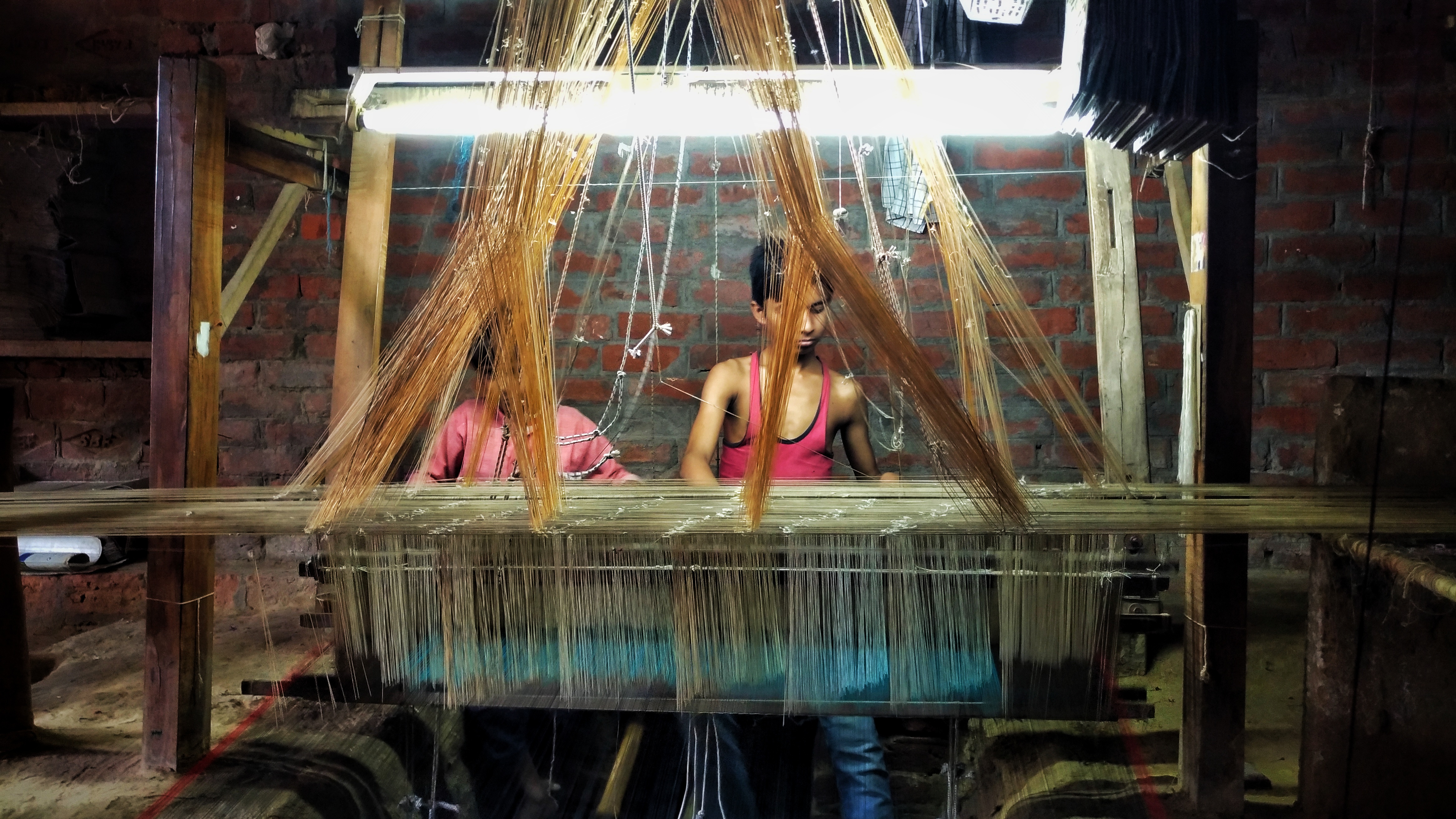As one enters the famous and dense colonies of Varanasi where weavers or ‘Bunkars’ of the city live and work, the familiar sound of handlooms and power looms seems absent; at least a lot less than what it was before November 8, 2016.
On that day, Prime Minister Narendra Modi announced that from midnight onwards, notes of Rs 500 and Rs 1,000 would be withdrawn from circulation. But the decision – which was taken on a pretext to curb the black money hidden outside the banks – did little to end the menace of black money, but did sound the death knell for the weavers of Varanasi.

Varanasi is the centre of weaving industry and known across the world for the finest Benarasi sarees. But the beauty of the saree compares in stark contrast to the condition of the weavers, a number of whom have started moving on to other jobs. Their children, once in school, are also now turning to weaving to ensure that the industry remains afloat.
Take the example of Wakeel Akhtar, a 50-year-old weaver who had grown his business of weaving enough to progress to power looms from handlooms. But for the past one year, only one of his eight power looms are running. The rest remain idle and gather dust.
All thanks to demonetisation, which was followed by GST.

Akhtar said, “During demonetisation, we started taking loans from several people. And that loan kept us running for several weeks. Otherwise, we were spending too much of our time standing in bank queues, rather than working on our looms.”
Soon after demonetisation, Varanasi’s weavers lost their daily earning. As a sector which survives on daily payment basis, the weaving community of Banaras was able to reach some sort of settlement only four months after the currency ban.

“For the bigger businessmen and firms, we were the tools to return the old currency in the banks,” said Akhtar, referring to the fact that small-scale workers, craftsmen and weavers were getting paid in older currencies, and they had to stand outside banks to exchange them.
But there are much bigger problems before the weavers, like the kids who have left schools and started learning to weave. 42-year-old Mohammad Azam is the father of three children. All were studying in the school until April 2017. After the academic session concluded, Azam was unable to register them again for the next session.
Azam explains the situation, “There are two kinds of weavers. The first is the loom owners. We have to take care of everything, from threads to the looms. And second are contractual weavers, who come here and work without any sort of responsibility for things, and they have to get paid a definite amount every day, irrespective of the conditions.”
“Both sections have taken a hit, but the second category has moved to other jobs. We, the loom owners, have no such option,” said Azam. “So I did not have any money to let my kids continue the studies. Now all have indulged in weaving because there is no any way out of this,” he added.
Sabir Ali, 30, was only a weaver before, but now he deals in other kinds of stuff related to weaving, like making threads. For him too, this was the only option. Ali said, “Luckily, I still weave, but fewer than before. But many of my friends went to Surat or Mumbai, in order to earn better in other jobs, as weaving is a dying business in Varanasi.”

Ali said, “Soon after problems of demonetisation ended, it was the cashless India thing which took a toll. Businessmen started to pay us in the cheques – as the government introduced a rule of not paying more than Rs 10,000 in cash.”
“We were people who lived on the daily wages. We used to spend our every day’s earning into the food and clothes. Now with the cheques, we have to wait three days for the amount to appear in our bank accounts, “said Ali. “So to feed, we have to have something else, so I am also selling low-quality threads to weavers.”
Sabir Ali took us into a house of his friend. There were four people sitting in the loom and finishing Banarasi Saree and cotton Saree jobs that came to them after four weeks of idleness. Aslam Ansari said from behind of one of the loom, “And we will get our payment more than a week after we submit our work.”
But the more surprising scene was in the adjacent room, to show which Sabir Ali took us into the particular house. There were two boys named Mohammad Alam (13) and Shamim Akhtar (14) who were weaving together on a loom. Shamim Akhtar still goes to school, while Alam quit recently. They both were learning to weave. Sabir Ali said, “They are not studying not because they are poor, but because their father cannot earn much on his own.” The kids nodded to this claim.

It is not a new thing to see kids learning the weaving process, but seeing them leaving studies because of weaving is indeed new.
The weavers, who were slowly recovering from the demonetisation disaster, were hit again in 2017 when the government introduced GST as “one nation, one tax”.
Rajeev Kumar Modi, a 45-year-old thread dealer in Varanasi, is also suffering the pain of demonetisation and GST. Modi said, “Soon government banned the currency, my warehouse left filled with the raw materials and threads for several months. No weaver was able to buy from us, so we were not able to bring more.”
“Soon the conditions normalised over a period of time, but after GST, weavers do not come here often,” said Modi.
He also said, “Previously we used to sell 20 or 30 kilograms of threads every day, now this has become our weekly count.”
Cotton and silk threads fell under 5 percent slab, while the artificial silk threads – which constitutes the major part of the business in Varanasi’s weaving community – fell under the 18% GST slab. Earlier, the Central Board of Excise and Customs refused to consider saree as readymade or made-up. And even if it was considered made-up, a mere 2% tax was levied on Sarees. But after GST, the prices of the final product as a saree went up by around 20%, but weavers’ wages were cut down.
“A businessman has to sell a saree to various customers with a profitable margin, so he cut down our wages. If we were getting thousand rupees for completing a saree before GST, now we are getting only Rs 700-800 for the same piece,” tells Shamim Ansari, a 32-year-old weaver from the city. “Our wages fell down because the profit margins had to be maintained,” he added.
In addition to the GST on threads, GST of 5 percent was also introduced on the Sarees, which faced heat from the various confederation of Saree dealers. And seemingly, government’s apathy towards the protest has hit the PM’s own constituency most.
One can argue that the issues of weavers have come to the notice of the government and that they are working to address these issues. Prime Minister Narendra Modi inaugurated a Trade Facilitation and Craft Museum Centre in Varanasi in September this year. The goal to establish the centre was to promote the work of weavers and artisans of the city. However, many weavers have not even heard of the centre, and those who know little about it say – if Mohammad Saqib to be quoted – that the centre is a museum and showcase of weavers’ work. “One should see the conditions from the ground that we are not able to build up any kind of product in our traditional workshops and looms,” added Saqib.
Moreover, the central government erected a Weaver’s colony and training centre in a Karsara village nearby of Varanasi in 1993-94. But the training centre lies unused because of its distance from the city’s centre which is more than 15 kilometres. So, while the government seems to have taken steps, their effect is limited and does little to assuage the pain of the weavers. And this is visible in areas around Bajardiha or Peelikothi – the two major centres of weavers in Varanasi – many weaving houses can be seen locked, even in peak times. Mohammad Jamaal, a 77-year-old resident of the community said, “This was the season of weaving. No one could sleep due to high demands ahead of wedding season. You could see weavers working at least 16 hours a day. Now you can see most people shutting their shops.”
Courtesy: Two Circles
